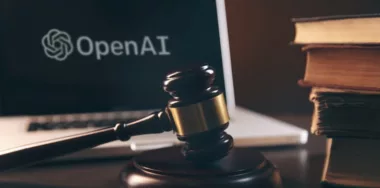The United States’ approach to digital asset rewards is overly complex, leading to confusion, double taxation, and overseas relocation of U.S. companies, according to Rep. Drew Ferguson (R-GA).
The lawmaker made the statement when introducing ‘The Providing Tax Clarity for Digital Assets Act’ with Wiley Nickel (D-NC) on April 30. The Act aims to ensure block and staking rewards are only taxed at the time of their sale or exchange.
While it has a journey ahead of it before becoming law, the Act received full support from both the Proof-of-Stake Alliance and Coin Center, think tanks designed to advocate for the interests of the digital currency industry.
Clarity is good, but this amplifies the problems with proof-of-stake blockchains
Regulatory clarity is generally a good thing, but The Providing Tax Clarity for Digital Assets Act will, perhaps unwittingly, amplify some of the critical problems with proof-of-stake blockchains.
Unlike proof-of-work chains, where miners are known and can be identified due to their vast power consumption, proof-of-stake validators can remain comparatively anonymous. This leads to network security issues, such as not knowing who is running validators or what their agenda is. It also leads towards monopoly and the inability of competitors to enter and take on large oligarchies on the network.
One of the ways to identify who is staking is to tax staking rewards. If those receiving rewards for staking have to pay tax on them, there’s a paper trail detailing who is staking, or at least who was at one point. Or, at least, there should be.
Abolishing the need to pay taxes on staking rewards until they are sold or exchanged only exacerbates these problems: the tax records identifying stakers will largely disappear, and the rate at which they can accumulate a larger share of the network will multiply. Think of it as similar to compound interest; if you have to sell and pay tax, that slows down your accumulation rate, whereas if you can just hold your dividends and then earn further rewards on those, you’ll grow exponentially.
While there are allegedly over one million validators on the Ethereum network today, nobody knows who they are, perfectly demonstrating the problem with the proof-of-stake consensus mechanism. How do we know that most of these validators aren’t just a handful of organizations or corporations splitting their ETH into lots of 32 tokens and gaining control of the network while making it look decentralized?
Validators and network nodes must be identifiable. It must also be possible for new entrants to come in and disrupt existing monopolies and influential players. The Providing Tax Clarity for Digital Assets Act is a bad idea from this perspective.
Watch Enterprise blockchain: The perils & promises
New to blockchain? Check out CoinGeek’s Blockchain for Beginners section, the ultimate resource guide to learn more about blockchain technology.










